Botanical Illustration worshop: Composite flowers
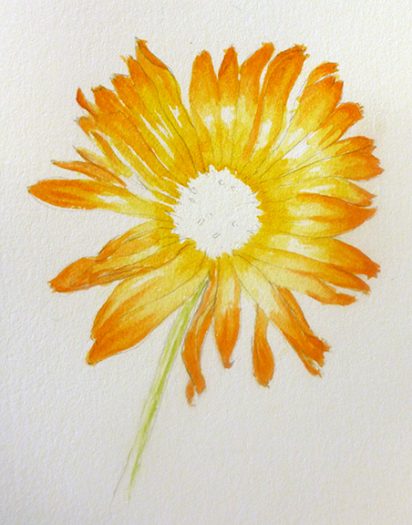
When you teach botanical and natural history illustration, you need to focus on anatomy and structure of plants and animals as well as on watercolour painting and drawing techniques.
I recently got to teach an experienced botanical illustration group based in Hereford. They decided to learn about Composite flowers.
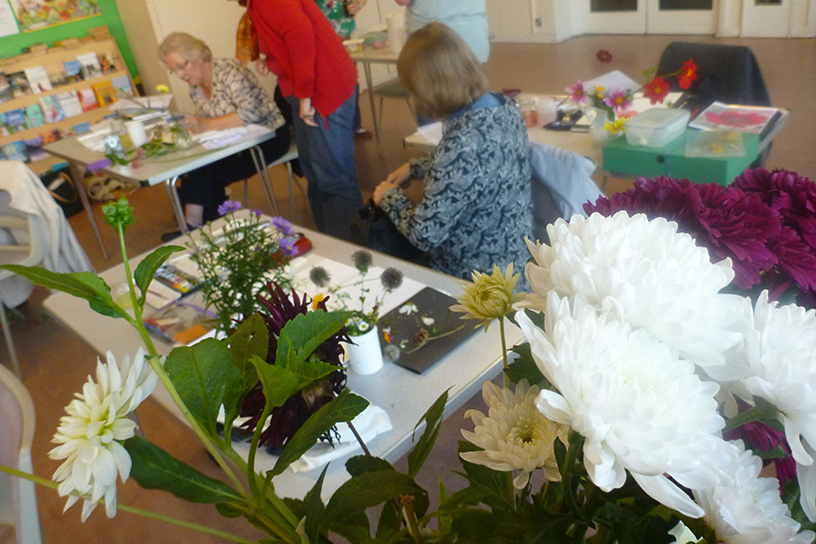
Some of the dahlias available to draw at the Composite flower painting session
Some information on composite flowers
Composite flowers (formerly Asteraceae) are very common, and amazing. Each flower head is actually an assemblage of lots of tiny flowers. Some have ray florets (often with a long strap-like corolla; pull apart a dandelion and have a look). Some have disc florets (these look like tiny flowers, often in the middle of a flowering head – take a close look at the centre of a sunflower, or a hand lens to the yellow area of a daisy). For more on this, please check out my blog “Tips on Painting Composite Flowers”.
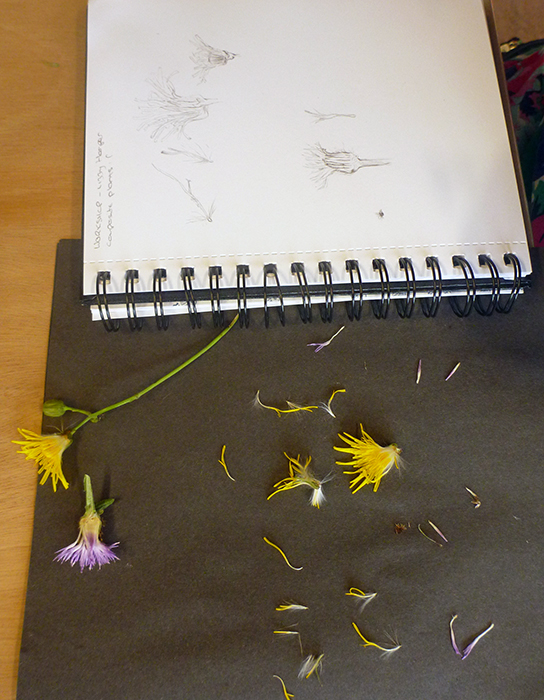
Dissection showing ray florets (putting specimens on black paper can be helpful)
The main problem with drawing these wonderful plants is that the individual florets are tiny, so everyone had to bring in a hand lens are were encouraged to use my dissecting microscope. they also had to tear flowers apart, which didn’t sit well with some of the members!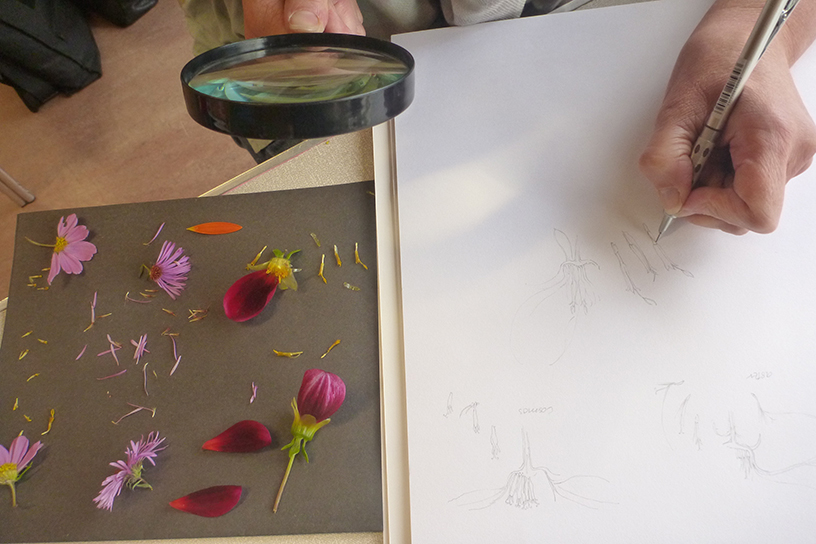
Drawing up disc and ray florets in pencil with a hand lens
Drawing the composite flowers
Using pencil, they drew the overall structure of three members of the family. Then they drew the disc and ray floret details. The room was full of specimens to choose from. We had thistle, sunflowers, zinnia, globe artichoke, mayweed, dahlia, dandelion, hawksbit, feverfew, knapweed, burdock, asters….. They set to and did some lovely observational drawing.
Next we looked at the seeds. These are interesting and varied – sunflower seeds to dandelion clocks (and everything in between). For more on the seeds of Composite flowers please take a look at the bottom part of my blog on the achene seed type. The room was full of thistle down as I got them to examine and record at least three different seeds (or cypsela). I asked them to include the seed itself, and also the associated dispersal mechanism in their drawing. Again, they produced excellent detailed drawings.
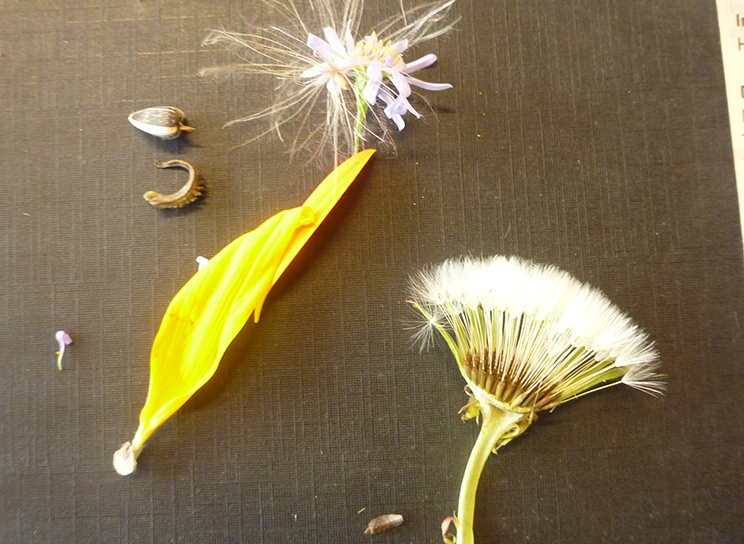
Seed variety in composite flowers: A sunflower seed next to a field marigold seed (top left). Creeping thistle down (top middle). Hawksbit seeding head in dissection, and a burdock seed (bottom middle)
Painting yellows
After a swift lunch, we discussed (and I did a demo of) mixing yellows and using the paper to keep paler areas light and bright. Next they set to and worked on a full-colour portrait of a composite flower.

Student putting into practice my advice on using the white of the page for highlights
I asked not only for the entire plant, but for the botanical details that accompanied the flower – much easier to do having spent the morning dissecting them out and drawing them.
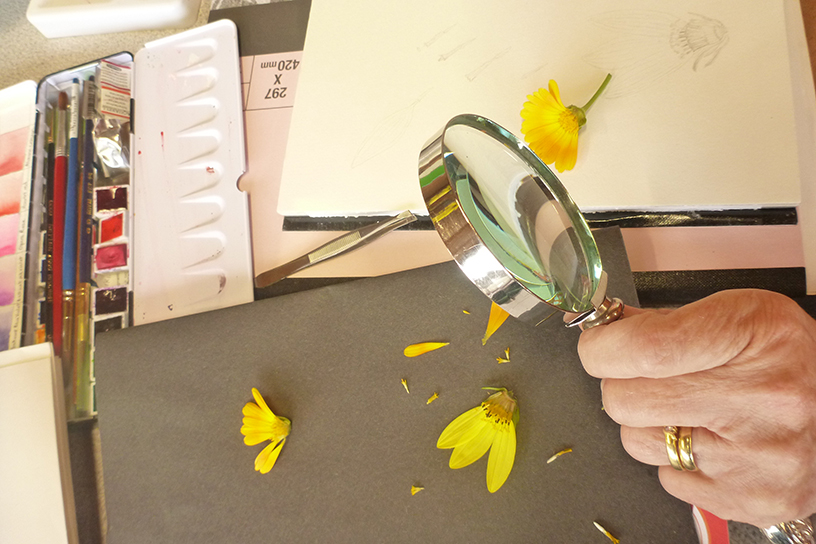
Looking at details whilst working on composite flower portraits
There were some minor struggles with petal colour becoming muddy, and some heart-felt irritation at not being able to dissect out a “perfect” floret, but they worked extremely hard and by the end of the day had all created good, and botanically accurate, illustrations. Sadly none had been able to finish their paintings (I didnt give them enough time!), but lots intended to continue the work once they got home.
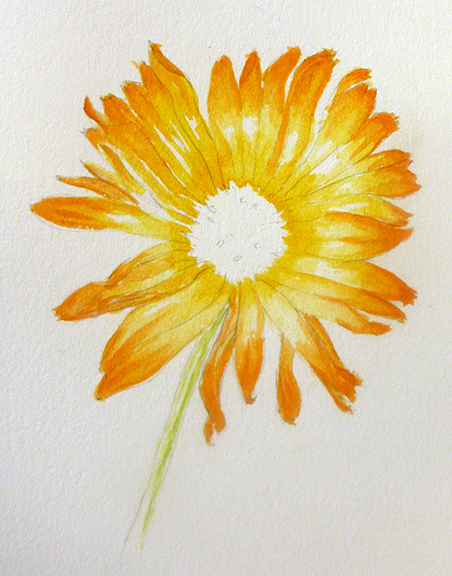
Field marigold illustration in progress
I think they were all exhausted, but got to take home their artwork as well as bundles of flowers which we’d not torn apart in our quest for disc and ray florets.
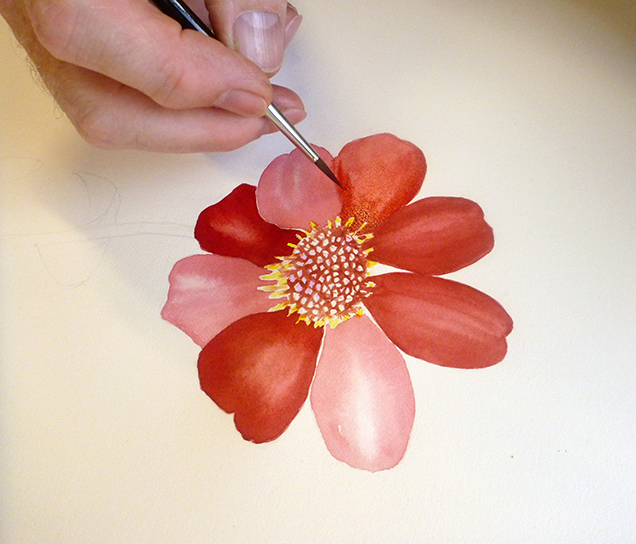
Working into the details of a Dahlia

